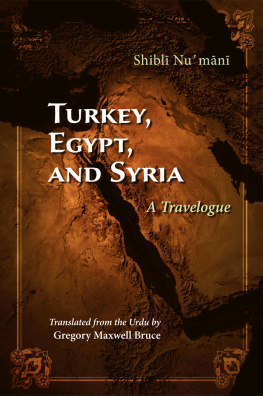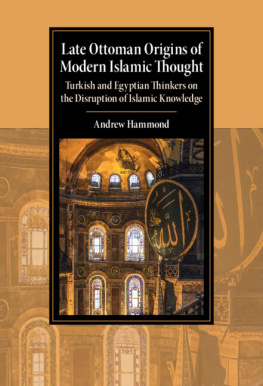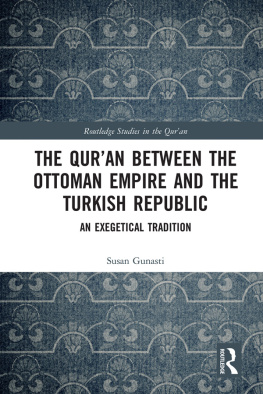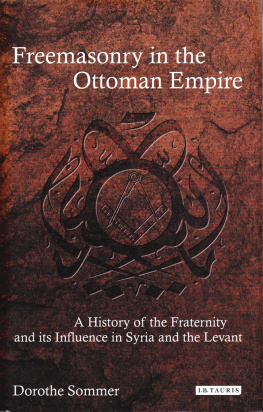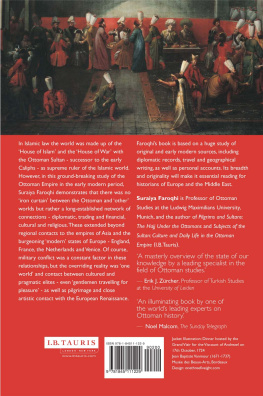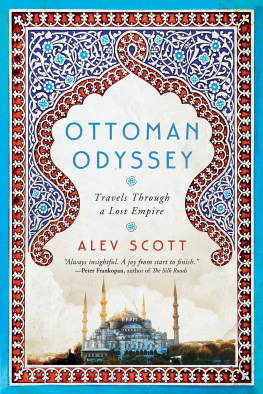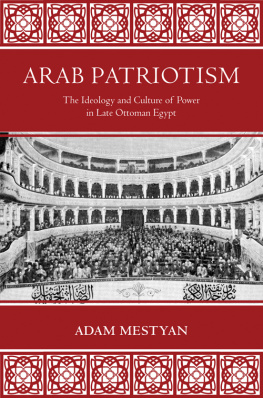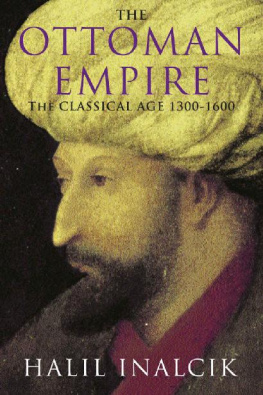Contents
Guide
Page List
TURKEY, EGYPT, AND SYRIA
Middle East Literature in Translation
Michael Beard and Adnan Haydar, Series Editors
Select titles in Middle East Literature in Translation
All Faces but Mine: The Poetry of Samih Al-Qasim
Abdulwahid Lulua, trans.
Arabs and the Art of Storytelling: A Strange Familiarity
Abdelfattah Kilito; Mbarek Sryfi and Eric Sellin, trans.
The Elusive Fox
Muhammad Zafzaf; Mbarek Sryfi and Roger Allen, trans.
Feltun Bey and Rkim Efendi: An Ottoman Novel
Ahmet Midhat Efendi; Melih Levi and Monica M. Ringer, trans.
Gilgameshs Snake and Other Poems
Ghareeb Iskander; John Glenday and Ghareeb Iskander, trans.
Jerusalem Stands Alone
Mahmoud Shukair; Nicole Fares, trans.
The Perception of Meaning
Hisham Bustani; Thoraya El-Rayyes, trans.
32
Sahar Mandour; Nicole Fares, trans.
For a full list of titles in this series, visit https://press.syr.edu/supressbook-series/middle-east-literature-in-translation/

Copyright 2020 by Syracuse University Pres
Syracuse, New York 13244-5290
All Rights Reserved
First Edition 2020
202122232425654321
Originally published in Urdu as Safarnmah-i Rm o Mir o Shm (Agrah: Mufd-i m Press, 1894).
The paper used in this publication meets the minimum requirements of the American National Standard for Information SciencesPermanence of Paper for Printed Library Materials, ANSI Z39.48-1992.
For a listing of books published and distributed by Syracuse University Press, visit https://press.syr.edu.
ISBN: 978-0-8156-3656-4 (hardcover)
978-0-8156-3654-0 (paperback)
978-0-8156-5481-0 (e-book)
Library of Congress Control Number: 2019948327
Manufactured in the United States of America
Contents
Translators Preface
Turkey, Egypt, and Syria: A Travelogue (Safarnmah-i Rm o Mir o Shm), by Shibl Numn (18571914) was first published in July of 1894. It records the experiences of the author while traveling in the Ottoman Empire and Egypt from May to September, 1892. Internal evidence (for example, reference to the death of the Egyptian scholar Al Psh Mubrak [d. November 1893]) suggests that Shibl wrote much of the travelogue in the first half of 1894. Advertisements for the book were published by the Aligarh Institute Gazette, the widely circulated biweekly organ of Mohammedan Anglo-Oriental College, where Shibl was professor of Arabic and Persian. The book was also promoted by prominent scholars closely tied to the college. It sold well enough that a second edition, including a few minor changes, was published from Delhi in 1901. All subsequent editions of the text are based on the second edition. During the Khilafat Movement in British India (191924), the text came to have new political significance as the figure of the Ottoman sultan and the Turkish Empire became symbols of political and social mobilization against British rule. By the middle of the twentieth century, the text had become a canonical work of travel writing in Urdu and it has rarely, if ever, been out of print. It is often required reading in Urdu literature courses in India and Pakistan. This translation is based on the first edition. Changes reflected in the second edition are noted in the endnotes.
Readers will notice that the section titles in the original Urdu table of contents do not exactly match the headings in the text. This is in keeping with the original text, in which the latter appear in the margins. The text itself divides into sections rather than chapters, though the index of the lithographed first edition hints at major sections by employing a bolder, larger script. I devised the sections in the first table of contents of this translation. In other regards, the translation attempts to mimic as closely as possible the format of the original.
Although the main narrative is in Urdu, the travelogue also includes a considerable amount of Arabic and Persian, as well as a handful of phrases and a royal farman in Ottoman Turkish. In the interest of maintaining the multilingual character of the original, I initially considered transliterating all Arabic, Persian, and Turkish passages in roman script and giving translations in the footnotes. This method proved irksome and did little to enrich the experience of reading the text, so I decided to include the English translations of the longer Arabic, Persian, and Turkish passages in the body of the text and to put the transliterations in the endnotes and appendices. It proved impossible to translate all the passages into English in the body itself, since Shibl often quotes a phrase, sentence, or passage, then translates or explains it to his reader in Urdu. To present both the original quotation and Shibls Urdu gloss in English would have been confusing. In these cases, the original is left in transliteration alongside Shibls translation, in parentheses. My literal translation is given in the endnotes. Shibl also quotes from the Quran and the maxims of jurisprudential reason without glossing the meaning for his readers. In order to preserve the allusive nature of the original, I decided to retain these transliterations in the body and to give translations in the endnotes. Where appropriate, I have inserted English glosses into the body of the translation in square brackets. I have also noted some specific terms and proper names in brackets to facilitate comparisonfor example, Military Academy [Maktab-i arbiyah]. The original travelogue includes a handful of footnotes. These are marked by an asterisk and are maintained as footnotes in the translation. All numbered notes, which appear as endnotes, are my own and are intended to provide historical context. To facilitate comparison with the original Urdu, I have also included the page numbers of the 1894 first edition in brackets.
The travelogue contains a handful of English words transliterated into Urdu, some of which Shibl glosses in parentheses. It also includes a large number of technical or specialized Urdu (and Arabic, Persian, and Turkish) terms now current in English. In keeping with the literalism of the translation, I decided that, where appropriate, Urdu words that are adequately glossed in the New Oxford American Dictionary (NOAD) should be left in transliteration in the travelogue. Readers are thus directed to NOAD for definitions of technical terms not included in the glossary, such as amr (amir, emir), fiqh, j (hadji, haji, hajji), namz, psh (pacha), qiblah (kiblah), ulam (ulama, ulema), and ikr (dhikr), as well as non-specialist terminology, such as crore, lkh, sib, and ustd. In a few cases, standard American English spellings have been used to facilitate the use of the dictionary (e.g., crore instead of karo).
In addition to the annotations, I have also included five appendices. comprises English transliterations of the one short and two long Persian poems that Shibl wrote and included in the travelogue. The glossary comprises technical and specialist vocabulary either absent from or inadequately glossed in NOAD. The translators afterword discusses the text in context. Points of focus include, inter alia, relevant biographical information about the author and broad discussions of Arabic literature, intellectual networks, Islam, and travel writing in Shibls world.

